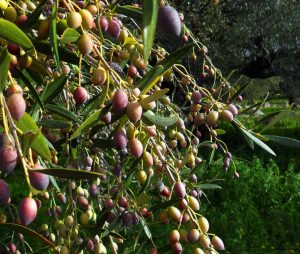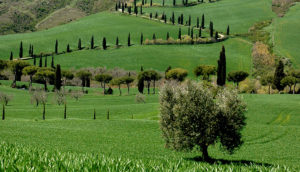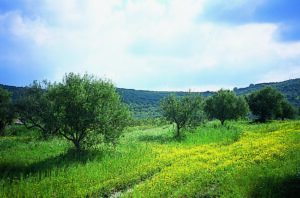Spain

Olives ripening on the tree
I watched the storms lashing through Andalucia recently and, like everyone else, I was horrified to hear about the loss of life and the destruction of homes and infrastructure. I have now started to think about the wider implications of the disastrous weather for agriculture and in particular for the olive harvest.
Things were looking pretty good for Spanish olive oil production this year, hopefully going some way to repairing the damage done to sales by the previous year’s catastrophic harvest and the resulting huge price hikes.
However, bad though the situation is in the regions around Valencia and Malaga, I am pleased to be able to report that in the most part the rest of Andalucia the olive crop has not been affected. Indeed in some areas the heavy rain has been beneficial. Francisco Vano reported that his olives groves received 62 litres of rainwater when they really needed it, at the beginning of the Harvest. So far the official forecast for production in the region remain the same.

Tuscan countryside near to Villa Magra
Italy
The situation in Italy is more complicated. Olive Oil Times reports that growers across the peninsula are experiencing lower-than-expected olive oil production volumes as the harvest season. In some cases, large volumes of olives do not deliver the usual yields, while in others, typical yields come from fewer olives. Producers in the north of the country lament conversion yields well below average. Rainfall at the end of October delayed the harvest and kept yields low. This will inevitably impact prices. Conversion yields refer to the amount of olive oil extracted from 100 kilograms of olives. A seven percent yield means seven kilograms of olive oil are obtained from milling 100 kilograms of olives.
In Puglia, the country’s most significant olive oil-producing region, conversion yields are between 12 and 16 percent. However, here the reduced volume of fruit is affecting overall production levels.
Some growers suggest that Puglia will produce less than half of its usual output. This could be extremely serious as Puglia is by far the largest olive oil producing area of Italy.
Despite these challenges, some quality growers have managed to adapt.
Greece

Biolea estate in Crete
Final production figures for the Greek harvest are still in the balance. Cristina Stribacu from Lia tells me that olive groves on the Greek mainline without irrigation have experienced significant stress and are not producing the expected amount of olives. In Crete the conditions have been even more challenging. “However, last week we had some wonderful rain, which has brought much-needed relief to the trees, refreshing them”.
Once again it is a question of “watch this space” as we discover what this period of such changeable weather will bring next.